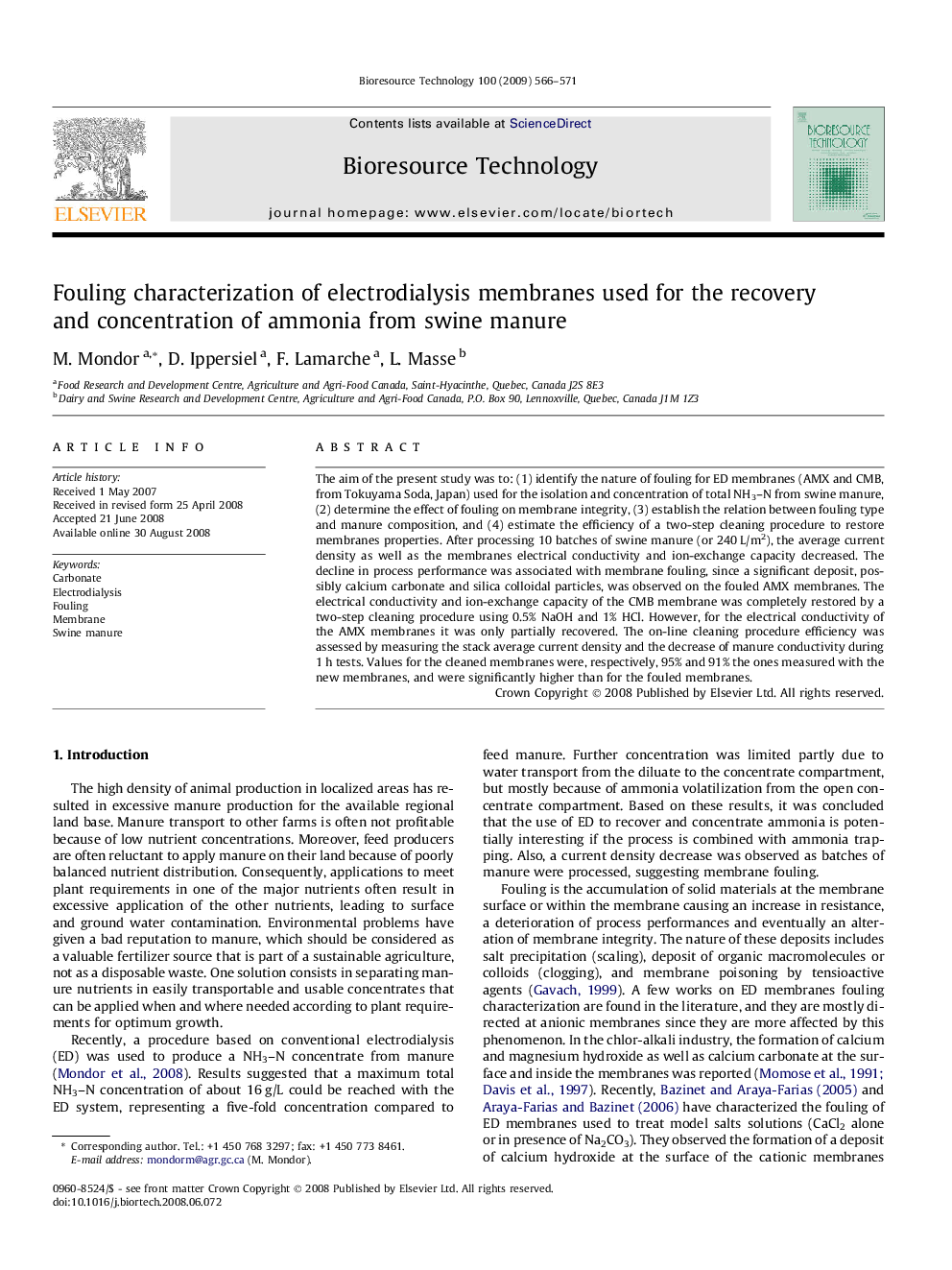| Article ID | Journal | Published Year | Pages | File Type |
|---|---|---|---|---|
| 683725 | Bioresource Technology | 2009 | 6 Pages |
The aim of the present study was to: (1) identify the nature of fouling for ED membranes (AMX and CMB, from Tokuyama Soda, Japan) used for the isolation and concentration of total NH3–N from swine manure, (2) determine the effect of fouling on membrane integrity, (3) establish the relation between fouling type and manure composition, and (4) estimate the efficiency of a two-step cleaning procedure to restore membranes properties. After processing 10 batches of swine manure (or 240 L/m2), the average current density as well as the membranes electrical conductivity and ion-exchange capacity decreased. The decline in process performance was associated with membrane fouling, since a significant deposit, possibly calcium carbonate and silica colloidal particles, was observed on the fouled AMX membranes. The electrical conductivity and ion-exchange capacity of the CMB membrane was completely restored by a two-step cleaning procedure using 0.5% NaOH and 1% HCl. However, for the electrical conductivity of the AMX membranes it was only partially recovered. The on-line cleaning procedure efficiency was assessed by measuring the stack average current density and the decrease of manure conductivity during 1 h tests. Values for the cleaned membranes were, respectively, 95% and 91% the ones measured with the new membranes, and were significantly higher than for the fouled membranes.
